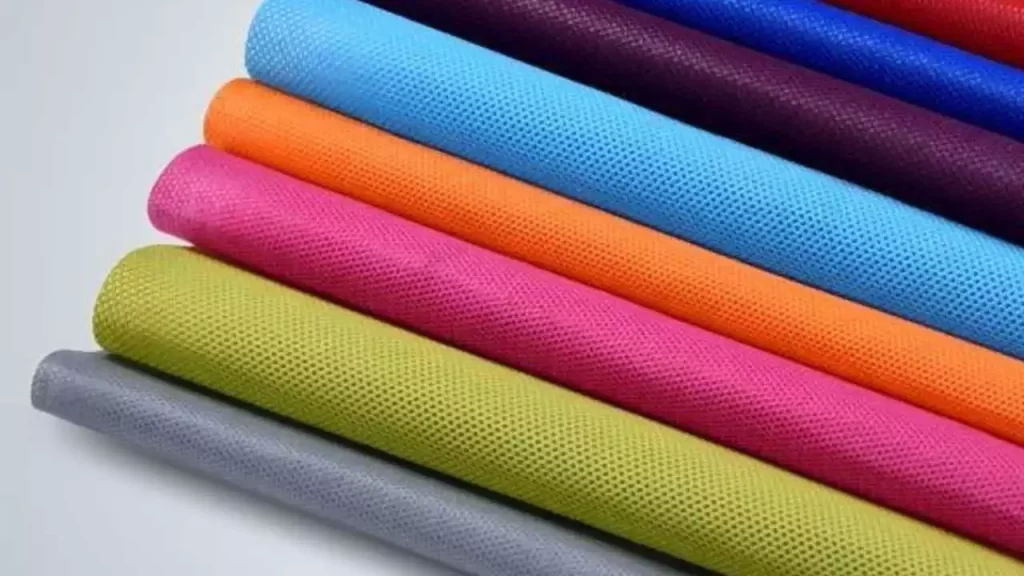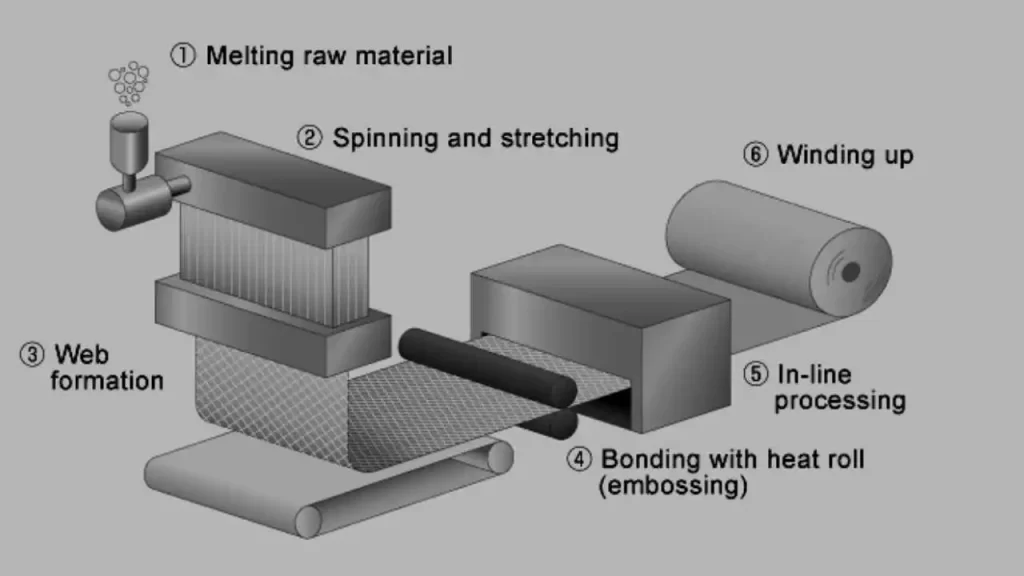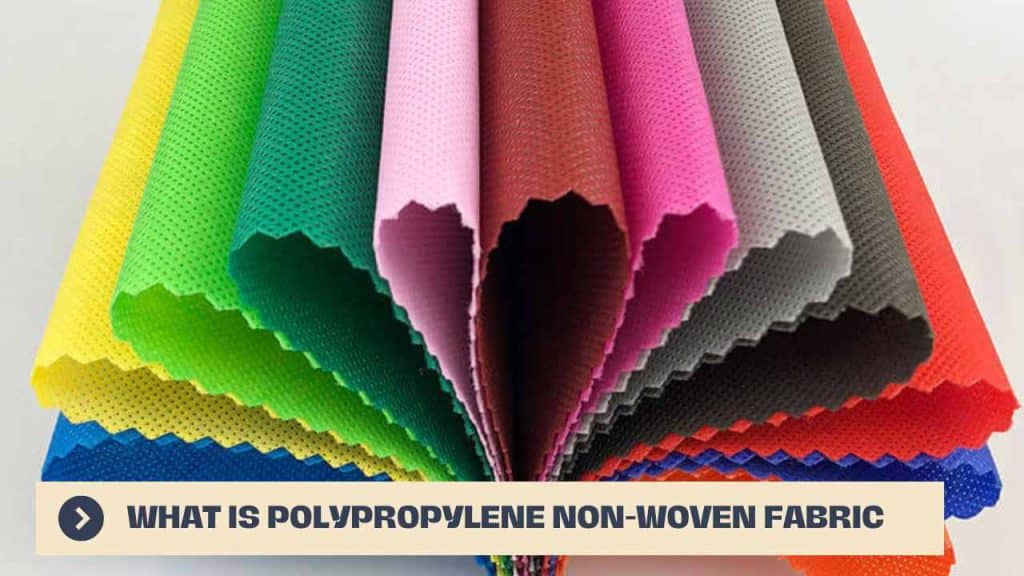Polypropylene Non Woven fabric is a synthetic fabric transformed from propylene. It is an excellent breathable, Durable, and Comfortable fabric. Nowadays, PP non-woven fabrics are widely used in the textile industry to manufacture various applications.
This fabric can be used in a wide range of applications including medical and hygiene products, agriculture, packaging, construction, and automotive industries. PP non-woven fabric is favored in many applications due to its high strength, lightweight, and breathability. In this article, we’ll discuss PP Non Woven fabric in detail.
What Is Polypropylene Non Woven Fabric?
PP fabric, also known as Polypropylene Fabric, is a kind of synthetic textile fabric. PP Non-woven fabric is a term used in the textile business to describe fabrics that aren’t knitted or woven. This fabric is made of Polypropylene [PP] polymer fiber which is a kind of non-woven material. So, we can say that PP is a non-woven group that includes fabric.

Polypropylene is a synthetic fiber that is manufactured from 85% propylene. PP Non-woven fabric has several exclusive features and functionalities like durability, softness, comfortability, lightfast, as well as ease to clean. Polypropylene Non-Woven Fabric is used to manufacture a lot of textile applications, including industrial, upholstery, and other applications.
You may also Like To Read: What is Velboa fabric
What is Polypropylene Non Woven Fabric Made of?
Polypropylene or PP is a kind of synthetic non-woven fabric that is made of Polypropylene polymer. This polymer is driven from 85% to 85% propylene, and propylene is an oil as well as natural gas production. Since oil and natural gas is the basic element of this fabric, so, it is a kind of synthetic fabric.
Extrusion is the production process used to create Polypropylene Non Woven Fabric. This method, which involves many chemical and heat operations, produces a material with the fabric’s appearance, feel, and quality. Let’s take a look at the manufacturing process of PP non-woven fabric.
How is Polypropylene Non-Woven Fabric made?
Here is the manufacturing process of this non-woven fabric is below_

1st Step: Extraction of Propylene
PP Non-woven fabrics are mainly made from polypropylene polymer, which is made from propylene. So, in the beginning, you have to produce propylene. Propylene is a synthetic material that is produced from oil and natural gas. Extrusion is the process of producing or collecting propylene from oil and natural gas.
2nd Step: Creation of Polypropylene
The next step in PP fabric production is the creation of Polypropylene. The propylene made in the beginning is basically a monomer, which is the main polypropylene polymer component. To make the polymer polypropylene, the monomer propylene is produced as gas from oil products and then subjected to a procedure called chain-growth polymerization.
3rd Step: Stringing and Mixing
A solid plastic substance is generated when a large number of propylene monomers are connected. Polypropylene polymer must be blended with a multitude of plasticizers, stabilizers, and fillers to create a usable textile. These ingredients are mixed into molten Polypropylene.
4th Step: Cooling and Remelting
The next step is cooling the molten Polypropylene. The cooling process is started after the various components are mixed in the molten polypropylene. In this case, pellets or bricks are made by cooling the molten polypropylene. After that, the pellets or bricks are transported to a textile mill and remelted.
5th Step: Forming and Finishing
After that, the polypropylene is shaped into sheets or let to cool in molds. The thin fibers are cut into the required shape whenever sheets are made and then sewed or glued together to make clothing or diapers. Polypropylene is formed into non-apparel goods using a variety of production methods.
Polypropylene Non-Woven Fabric Properties
| Fabric name | Polypropylene [PP] Fabric |
| Material of fabric | Polypropylene [PP] polymer |
| Fabric Breathability | Excellent |
| Heat retention capability | Medium |
| Moisture-wicking Capabilities | High |
| Stretch ability | Excellent |
| Prone to bubbling | Medium |
| Washing temperatures | Cold |
| Commonly used in | Backpacks, Military wear, Sportswear, N95 mask, diapers, Food packaging, tote bags, tapes, ropes, drinking straws |
Polypropylene Non Woven Fabric Characteristics
Lightweight Fabric
Polypropylene produces the most fabric volume for a given weight due to its low specific gravity. Polypropylene fiber has a high yield, which means it provides considerable bulk and covers while being lower in weight. PP Non-Woven is the lightest fabric in the world, even more, lightweight than water.
Breathable and Comfortable
Another excellent feature of this non-woven fabric is its breathability. PP Non Woven Fabric is a highly breathable fabric. Since it has the excellent breathable capability, it is also a piece of very comfortable fabric. So, PP fabrics are utilized to manufacture various apparel applications.
Moisture Absorption
Water is not a problem with polypropylene. The moisture absorbs less than 0.01 percent of its weight in water after a 24-hour soak test. As a result, Polypropylene is ideal for general immersing packages wherein the basket fabric beneath must be protected from a variety of chemical substances.
Chemical Resistance
One of the best features of this non-Woven fabric is that it has excellent chemical resistance capacity. Polypropylene fabric is resistant to a wide range of natural solvents, acids, and bases. Oxidation reaction acids, chlorine hydrocarbons, and aromatics, on the other hand, pose a threat to the fabric.
Thermal conductivity
The thermal conductivity of PP Non-woven fabric is the lowest of any natural or synthetic fiber. PP threads retain thermal or heat for longer periods of time, provide great insulative characteristics in garments, and keep the wearer warm and dry due to their hydrophobic nature.
Application of Polypropylene Non Woven Fabric
Polypropylene or PP non-woven fabric has several excellent features and effective functionalities. It was favored even over natural fibers because of its great durability, abrasion resistance, excellent breathability, non-absorption of dust, and liquids, as well as stains, and ease of cleaning. PP fabric is frequently utilized in apparel applications that require moisture transfer.
Sturdy Trade Fairs Totes, Braided Backpacks, Lunch Packs, and Coolers are also made with this fabric. These bags are tough enough to stand up to repeated usage, and many are quilted to keep food warm or cold. Physicians, nurses, and other hospital workers must use N95 surgical masks made of polypropylene cloth to protect themselves from COVID-19 Virus.
Another applying sector of PP Fabric is electrical insulators in electronics. Flexible packaging, stiff packaging, pipelines, food containers, bags, carpets, clear plastic, ropes, and concrete reinforcement, all of these applications are also manufactured from PP fabric. These Non-Woven fabrics are also utilized to make clothing and diapers.

